Green Spaces: Small Garden Communities of Dresden, Germany
In the city of Dresden there are 352 official garden associations, the oldest dates from the 1890’s. This project began as a formal visual exercise, but has grown to include a view of the social/political implications of the Kleingarten (small garden) communities.
The Kleingartens or Schrebergartens are small gated communities, kept in the family at times over generations. The associations lease land from (usually) the government and in turn lease defined garden areas to the association members. The garden areas are located mainly in unimportant land areas of the city; along roadways, old dump grounds, railroad tracks, or dried riverbeds. Sometimes the association is near or embedded within an area of apartment buildings or single family dwellings. I had made assumptions about the people of the garden communities that proved to not be true. I thought the gardens were strictly working class. I have learned that the gardens are occupied by working class apartment dwellers, but also by engineers, professors, chemists, psychologists, people who had traveled the world, but return to the gardens when in Dresden. Happily, the fastest growing percentage of newcomers to the gardens are young families.
I learned about the very strict rules by which the associations must abide and how they, on average, comply. People erect multiple room structures with full kitchens and baths in which they quietly stay overnight, breaking one of the rules. Each garden is required to plant 1/3 each of flowers, vegetables, and grass. Trees are to be limited to about 12 feet in height so as not to shade a neighbor’s garden. The density of vegetation might obscure the small garden buildings while evidence of the larger city may appear in the distance. When I first saw a group of gardens and their small structures I thought they were squatter areas, that is, until I noticed electric lines and satellite dishes. Some garden areas include public beer gardens where non-residents are welcome. My most likely entrance to the gated communities has been through such public areas.
Unlike any community gardens in the United States, each association defines its borders with fences and locked gates. Once inside, public walkways connect the individual gardens in a somewhat gridded arrangement. Each individual garden becomes its own private paradise defined by a gate. Sometimes the fence is dense shrubbery blocking public view. At other times, the gate itself is the only delineation of where the garden begins. The fence between two gardens may be as obscure as a single wire, or a row of bricks on the ground, while at other times, the property line may be defined by a solid hedge of evergreens. As I walked the public paths, I photographed the unique gardens noticing both interesting compositions and the unique plantings as determined by each gardening family.
Currently, if one searches Dresden, Germany on Google Maps, and you zoom in close, it is very possible to discover these garden communities. The smallest I found was 35 individual gardens, the largest contained 350. When I began this project (2004), riding the tram lines and being observant was how I located the associations. During my last trips (2008-9), Google Maps became my constant companion.
The people I have met in the gardens have been very gracious and patient with my quest to document the garden communities. I wish to thank them all and hope they are pleased with the results.
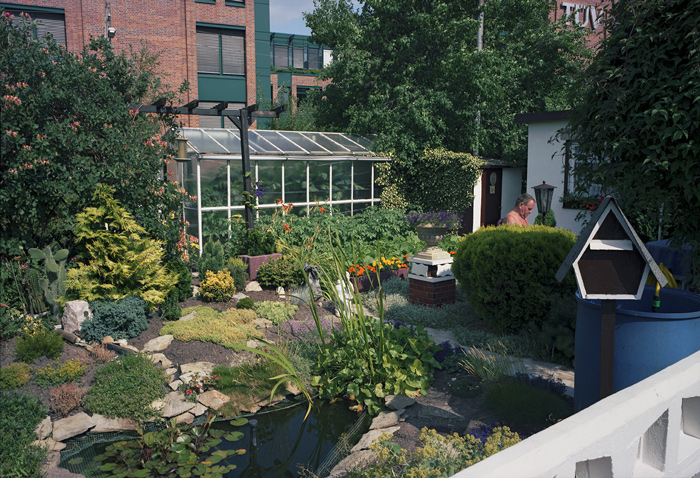
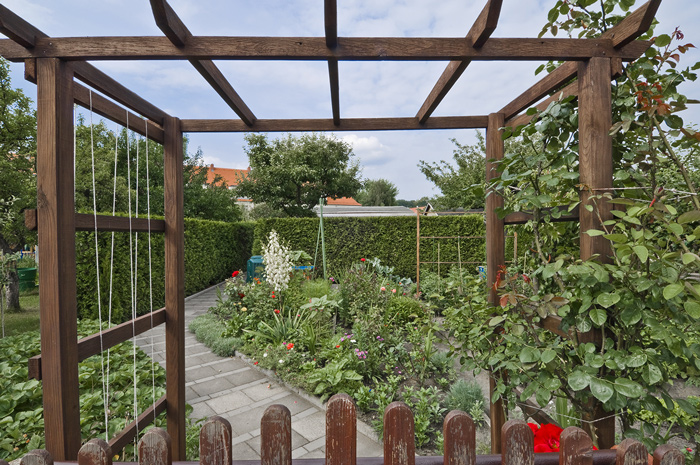
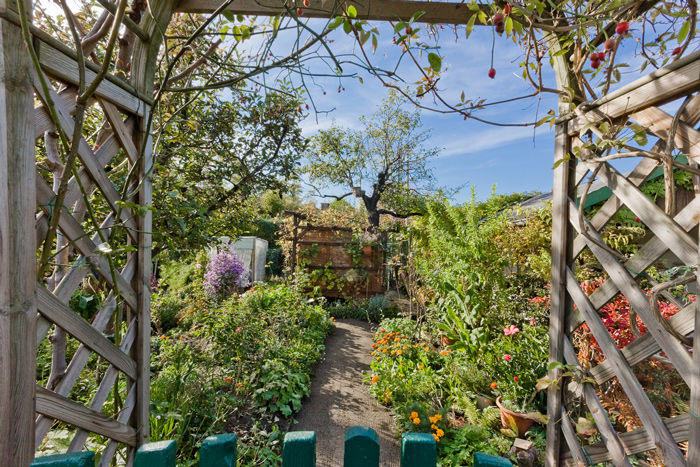
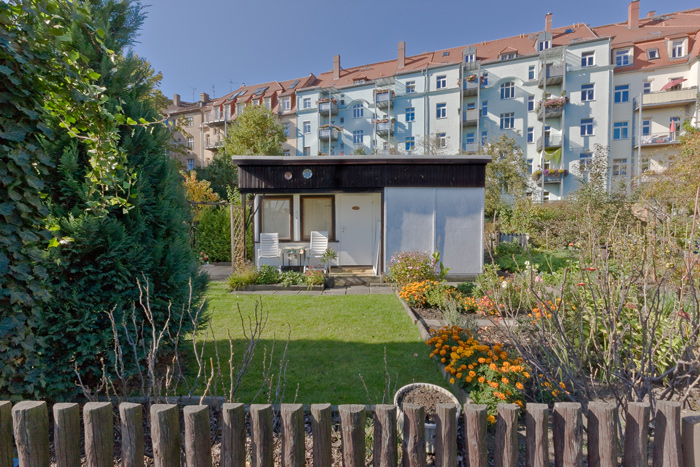
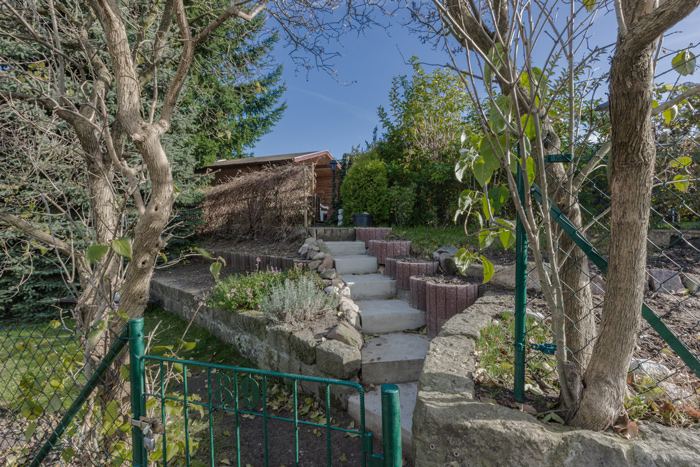
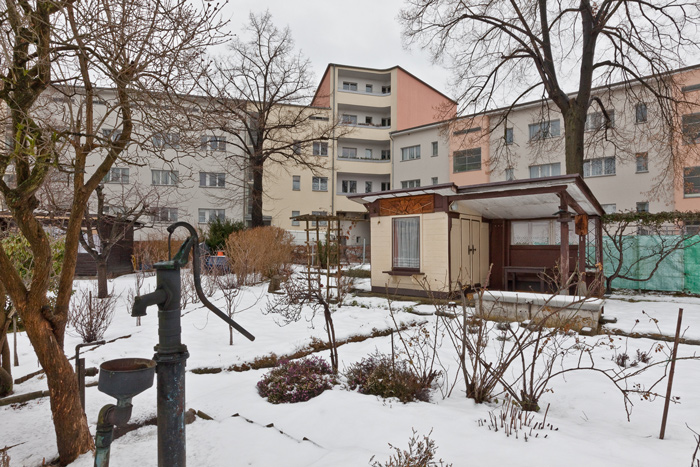
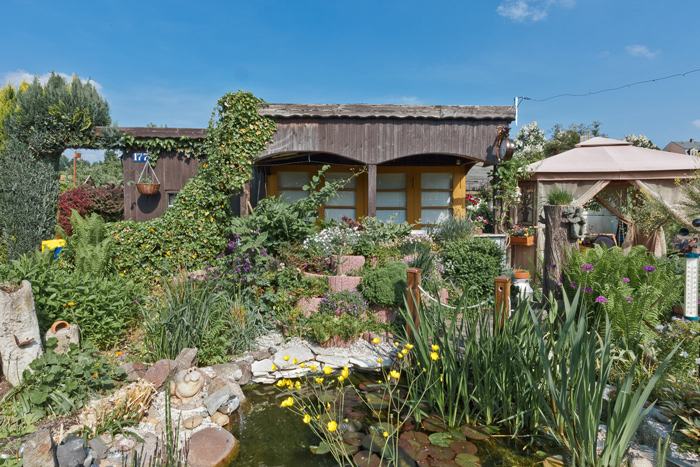
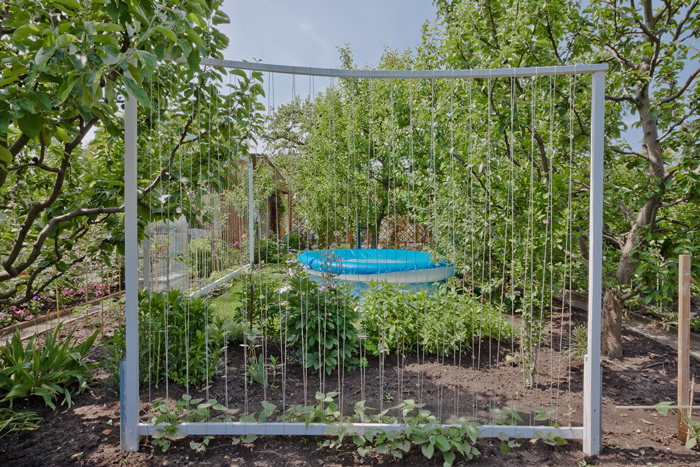 All images are © Ardine Nelson
All images are © Ardine Nelson
This project has been generously supported by grants from the College of the Arts, the Ohio State University (Columbus, Ohio), The Graham Foundation for Advanced Studies in the Fine Arts Research and Development Grant (Chicago, Illinois) and a 2008-2009 John Simon Guggenheim Memorial Foundation Fellowship (New York City).

